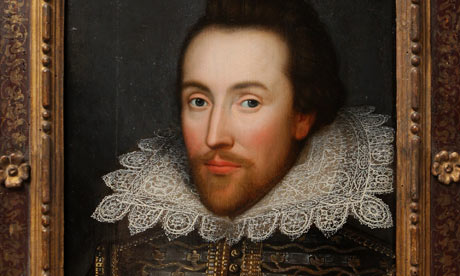
On the evidence adumbrated so far, it seems to me to be to be highly unlikely that the Cobbe portrait is a true lifetime portrait of William Shakespeare, as widely reported today.
I'm assuming there's something that Professor Stanley Wells, who has led the charge towards the identification, has something else up his sleeve – because so far the case seems rather unconvincing.
The story is that the owner of the Cobbe portrait attended the recent Searching for Shakespeare exhibition at the National Portrait Gallery, curated by Tarnya Cooper in 2006.
At that exhibition he saw a picture at one time thought to have been of Shakespeare, known as the Janssen portrait, that resembled his own "Cobbe" portrait, and which he felt was probably copied from his own painting.
But even if he is right, and the Janssen portrait was copied from his own, surely that just doesn't work. The Janssen portrait was painted c1610 – but doctored by the 1770s to make it look like Shakespeare. As the Folger Shakespeare Library points out (the owner of the Janssen portrait): "This makes it the earliest proven example of a genuine portrait altered to look like Shakespeare." In other words, unless there is new evidence about the sitter, it is the portrait of some random Jacobean chap which was later altered so it could be passed off as a portrait of Shakespeare (the look broadly based on the 1623 Martin Droeshout engraving, which we know from contemporary evidence to have been a good likeness, whether made posthumously or not).
What we are essentially left with, as far as I can tell, is a portrait of just about the right period of a fellow with roughly the right kind of hairdo (though to my mind looking insufficiently old and bald given the two true likenesses we know about, which are the Droeshout engraving and the Shakespeare memorial bust in Stratford parish church).
Prof Wells also talks about the fact that some of the pictures in the Cobbe collection were handed down by the family of the Earl of Southampton, Shakespeare's patron. But there is no documentary evidence that the "Shakespeare" portrait is one of those works.
Tempting as it is with portraits of this period to go for optimistic identifications, surely there has to be a bit more evidence on the table than this?

